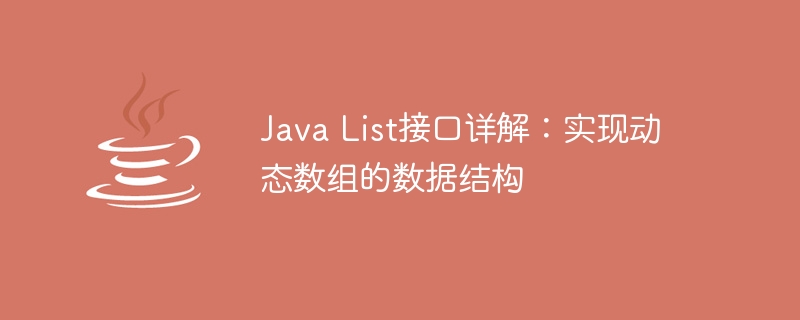

The Java List interface is one of the most commonly used interfaces in the Java collection framework. It is used to store an ordered set of elements and can be dynamically resized as needed.
A dynamic array is a data structure that allows elements to be added or removed at runtime and can be automatically resized as needed. It is a very common data structure used to solve many real-world problems.
Java's List interface provides many methods to operate dynamic arrays. Let’s learn more about these methods and how they work.
In addition to the above common operations, the List interface also provides many other methods to conveniently operate dynamic arrays, such as the size() method to obtain the number of elements in the list, and the isEmpty() method to Check if the list is empty, indexOf() method to get the index of the specified element, etc.
Java's List interface has many implementation classes, the most commonly used of which is the ArrayList class. The ArrayList class is an array-based implementation that provides efficient random access and fast insertion and deletion operations. It also implements a serialization interface that makes it easy to save ArrayList objects to a file or transfer them over the network.
In addition to ArrayList, there are other classes that implement the List interface, such as LinkedList and Vector. LinkedList is a linked list-based implementation that provides efficient insertion and deletion operations, but has poor performance in terms of random access. Vector is a thread-safe implementation, but is relatively slow in terms of performance.
When using the List interface, you need to choose the appropriate implementation class based on specific needs. If you need to perform frequent random access operations, you can choose ArrayList; if you need to perform frequent insertion and deletion operations, you can choose LinkedList; if you need to use it in a multi-threaded environment, you can choose Vector.
To summarize, Java's List interface provides a flexible and convenient dynamic array data structure. It allows you to add or remove elements at runtime and automatically resize the array as needed. By understanding the methods provided by the List interface and the characteristics of different implementation classes, you can choose the appropriate implementation class according to your specific needs to improve the performance and efficiency of your code.
The above is the detailed content of In-depth analysis of Java List interface: data structure implementation method of dynamic array. For more information, please follow other related articles on the PHP Chinese website!




